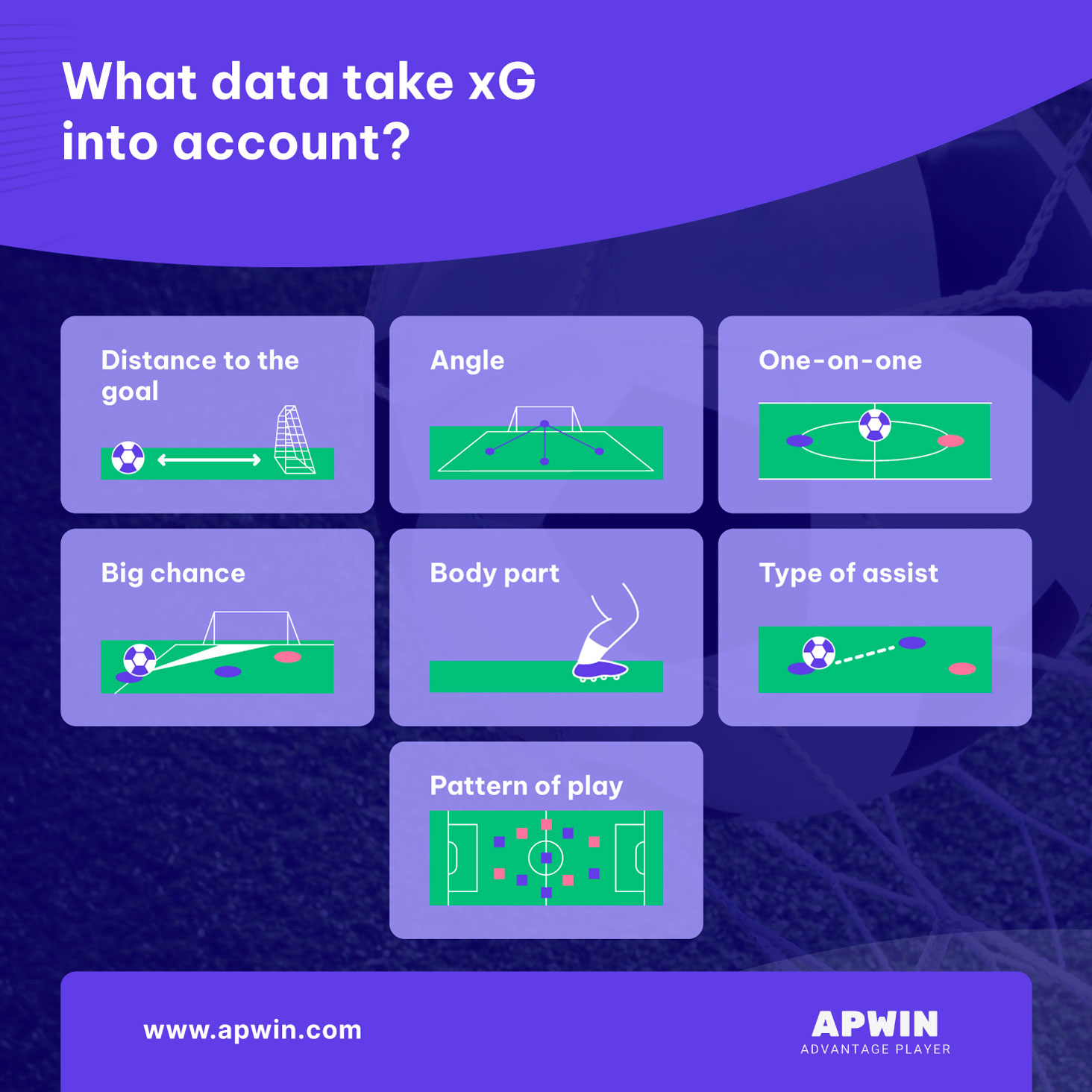Expected goals is one of the first advanced metrics that is widely known by general football fans. And due to the early adoption of sports betting and pro markets. Expected goals have become widely popular and turned into a regular feature for mainstream broadcasters such as BBC's Match of the Day and Sky Sports. It's a metric that has faced critics over the years as it's a blend of the traditional way of viewing a match and the evolving world of data analytics. So, what exactly are Expected Goals? And how should we be using it?
What Are Expected Goals?
Expected goals (or xG) are used to analyze the chance's quality in a match. Every shot has a value that shows the chances of a shot to become a goal. The value is based on many factors before the shot was taken, including the place of shot, the distance and angle from the goal and the body part (foot, head, or others) used to make the shot. Other factors include the playing speed, the passes leading up to the shot and many more.
A shot from the halfway line is less likely to become a goal than a shot from inside the box. xG can help us measure how likely a player is to score a goal from every different gameplay situations. For example, let's say the chance of pre-shot characteristics from inside the box is worth 0.1 xG. This means that a player that is expected to score a goal from every ten shots in the situation can turn into a goal 10% of the time.
It may be new terminology, but the phrases have been used by commentators long before xG even existed, with expressions like "He scored it eight out of ten."
How to Calculate Expected Goals
When watching a football match, we can naturally tell if a chance is likely or not to end up in a goal. Is the striker close enough to the goal? Did they shoot it from a good angle? Was it a one-on-one?
This variable can then be used to measure the chances of a goal being scored. The challenge is that 25 shots per game on average need to be analyzed, and all are likely to be from different situations. This lets us value the quality of chances from the thousands of shots taken in any championships during the year.
A logistic regression model is a model that builds stats perform's xG. This model is powered by hundreds of thousands of shots from certain data and with the help of several variables that may affect the chance of a goal being scored. Below are some of the most important variables that are used:
- Distance of the shot
- The angle of the shot
- Time and space before the shot
- 1 on 1 with the goalkeeper if there were defenders around
- Body part (shot using head or foot)
- Assist type (through ball, pull-back, cross and others)
- Playing pattern (open play, fast break, corner kick, direct free kick, throw-in, and more)
We know that some situations are unique, which makes them work independently. Penalties have a constant value that correlates to their overall conversion rate (0.79 xG). Free kicks also have their own model and headed chances that are valued differently in open play and set-pieces.
The beginning of the 2017-18 season has changed the game. Stat Perform's detailed event data also include shot pressure and shot clarity qualifiers during every shot, which accurately measures the defender's and goalkeeper's pressures and positioning. These variables will also be included in the later model versions.
How to Use Expected Goals in Sports Betting
Expected goals data can benefit sports bettors as it provides the essential information that is not found in final scores. Because of the low-scoring nature of football, where a match may consist of only a few goals, the final score can be misleading.
For example, a team may have dominated a game with more possession territory and created chances, but they still ended up losing the game. This is why the basic goal data (final score) is unrepresentative of the match and, therefore, shouldn't be used as a base to decide your opinion of future bets.
However, xG goals data that comes from the game can be more reliable for future purposes. The data from xG can minimize the risk about the probability of finishing at both ends of the game and help you get a better interpretation of a team's performance qualities.
Long Term Profits from xG
Expected goals data can help bettors find value with regards to upcoming matches. When a team underperforms or overperforms their own xG metric, they usually return to their average metric soon.
For example, the expected goals data shows that Team A has picked up only 1 point from their previous three games even though they have been beating all their opponents. Because of this poor performance, the team can better win their next fixtures than what is shown in the data. This represents value.
Even though expected goals should only be used as a guideline, it might end up being a good bet if it's also in line with your research.
Ante-Post Betting
Ante-post markets always offer some great chances to make money, and if you're betting with a proper system rather than a gut feeling, you'll probably be successful. Besides predicting future football games, xG data can also forecast table standings and golden boot standings.
So expected goals data both for and against from previous campaigns can make an alternative league table, which gives a clear display of how a season went and how it can help us predict performances in the future. Keep in mind that these stats cannot predict certain factors such as injuries, transfers, form and new managers.
The Importance of Using xG Stats
Expected goals or xG calculates the chance of certain shots to become a goal in football. These shots are calculated through some variables, including shot angle, type of assist, distance from goal, whether the shot is a header, whether it was a big chance, etc. For example, a shot closer to the goals has higher xG, while headers have lower xG than shots.
Looking at a team’s or player’s performance can help predict the upcoming matches. When used correctly, xG can also help bettors analyze a team’s past and current performance, leading to great winning opportunities. However, teams can either outperform their xG models consistently or return to their basic stats after a couple of matches.

How Accurate is xG?
xG is the hottest metric in football and everyone seems to want to show off their own versions of xG. However, are they any good and can help you predict the goals accurately? None of the models that exist today is perfect. However, they still offer valuable data that may help you win your bets.
Even though the xG models today show up to 90% accuracy, the values where these models receive their information may not be relevant. Numerous factors come into play, such as the precision and recall and whether the models actually collect the player’s or team’s repeatable skills or just dumb luck. The perfect model needs to include all factors that may turn a shot into a goal where luck is also included.
The Teams in the Premier League with the Most xG (2022)
Expected goals (xG) is a complex metric to determine how likely a shot will become a goal for both teams. It provides us with a tool on how good the teams have performed. The 2021/22 Premier League is coming to an end, so which team has ranked in the top position in xG?
The defending champions, Manchester City, rank first with 2.51 average xG per match. Followed by Liverpool coming in a close second with 2.44 average xG. Both these teams are on the path to breaking historical records for their consecutive attacks. Chelsea comes in third with 1.93 and Arsenal with 1.86 average xG. Manchester United made it to the top 5 with 1.70, followed by Tottenham with 1.54 xG.
Final Thoughts
Expected goals is a way to add quality value in every goal-scoring opportunity based on the available information. It's a highly fast-growing model and with more data collected, the more accurate the metric will become.
Remember that the analysis is not always 100% accurate even though all conditions and situations are met. However, expected goals are here to stay and keep evolving for as long as men keep scoring goals.



